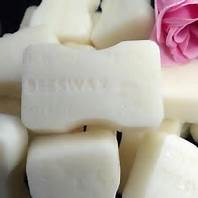Lactic Acid - Sounds Scary But Could It Be The Secret To Your Smoothest Skin Yet?














Lactic Acid - Sounds Scary But Could It Be The Secret To Your Smoothest Skin Yet?
Beauty brands have long been pushing glycolic acid as the gold standard when it comes to chemical exfoliation – but if you're sensitive skinned, you'll know this powerful skin-renewer can be a little too much on delicate complexions. Enter lactic acid: the gentler - yet no less effective - acid to know now.
Whether you’ve got an easily upset complexion or not, having too much of a good thing absolutely applies when it comes to exfoliating skincare. If there’s an acid in your cleanser, one hiding in your serum, and a sneaky inclusion in your night cream too, there's every chance you're overdoing it and straining your poor skin barrier.
Matteo Scarpellini Lactic Acid For Your Skin
'If you’re a frequent user of glycolic acid, be careful, as overuse can lead to a breakdown in collagen,' explains facialist Kate Somerville, who recommends limiting glycolic acid use to once or twice per week (and always using SPF in conjunction). 'While it’s perfectly safe to use glycolic acid at home in low concentrations, stronger concentrations can irritate the skin, causing redness, flaking, peeling, scabbing or even burning,' she warns.
It's clear that going too hard, too frequently with hardcore acids can disrupt your skin barrier, leaving it vulnerable to irritation and other conditions. However, we're not suggesting you forget about chemical exfoliation altogether – even if you've been burned before. Cue glycolic’s gentler sister: lactic acid.
Here’s everything you need to know about using lactic acid on your skin...
Getty Images Spyder - Beauty - Milan Men's Fashion Week Spring/Summer 2020
'Lactic Acid is a natural AHA (alpha hydroxy acid) known to accelerate cell turnover while helping with moisturisation,' explains Somerville.
Derived from milk or fruit sugars, this exfoliating ingredient possesses larger molecules than glycolic, meaning it won’t penetrate the surface of your skin as well, leading to a lighter degree of exfoliation
Thanks to its softly-softly approach, lactic acid is a great choice for people who find glycolic too intense. Those with extra-dry, sensitive, or reactive skin should pay close attention, as it'll offer the same exfoliating qualities as glycolic, minus the irritation.
These gentle properties undoubtedly make lactic acid a safer option for reactive skin, and a whole host of dermatologist-approved brands have jumped on the bandwagon, offering an array of lactic-powered products. If you’re totally new to the game, it pays to start small and slowly build up a tolerance.
So, what's the best way to harness this easy-going exfoliator in your daily routine? Lactic acid isn’t restricted to exfoliators – it’s now a key component in gentle cleansers, body treatments and even hand creams.
A cleanser containing lactic acid is a great introduction to the ingredient, as they generally stay on the skin for less time than a serum or moisturiser. Then, there’s a whole world of treatments to explore, from serums and moisturisers to exfoliating wipes and even body creams (brilliant for smoothing keratosis pilaris). Exfoliate away – your skin will thank you for it.
Articles-Latest
- 8 common mistakes that could be making your dry lips worse
- Dermatologist's insight on shower frequency without harming skin
- ‘Making Black More Beautiful’: Black Women and the Cosmetics Industry in the Post-Civil Rights Era
- A damaged skin barrier can leave you dry, itchy or oily. So, how do you fix it?
- What is collagen and why is it so popular in the beauty industry?
- Skin icing's not just for summer – this cryotherapy technique will get you party season ready
- How much sunscreen should you use and how often do you need to apply it?
- Are AHAs Safe?
- EXFOLIANTS - Cosmetics Unmasked
- ASTHMA - Toxic Beauty
- PHOTOSENSITIVITY - Toxic Beauty
- How to Tighten Your Loose Skin After Weight Loss
- Everything You Need To Know Before Getting A Septum Piercing
- What you should know about treating rosacea in darker skin tones
- Shampoos and Conditioners Designed to Soothe Dry, Itchy Scalps
- 3 things an expert wants you to know before getting filler
- Dissolving filler: everything you need to know
- How thread lifts differ to facelifts – and filler injections
- People are using face tape to minimise wrinkles, but does it work? After asking a plastic surgeon, I tried it for myself
- Reality of Black beauty influencing - making foundation with eyeshadow and unequal pay
Cosmetic ingredients
LOGIN
Who's On Line
We have 107 guests and no members online
Articles-Most Read
- Home
- Leucidal
- White Bees Wax
- Cosmetic Preservatives A-Z
- Caprylyl Glycol
- Cosmetics Unmasked - How Safe Are Colorants?
- Cosmetics Unmasked - Choosing Ingredients
- Cosmetics Unmasked - Colorants And Fragrances
- EcoSilk
- Toxic Beauty - Who's Looking At Cosmetics?
- Cosmetics Unmasked - Fragrances
- Microbes and Cosmetics
- Chemicals Lingering In The Environment
- Microbes and Safety Standards
- Toxic Beauty - Hazardous To Your Health
- Potassium Sorbate
- Yellow Bees Wax
- Synthetics In Cosmetics - The Industry Fights Back
- Fresh Goat's Milk Soap
- Active Ingredients
- What's Happening in the USA - Cosmetic Regulations - Toxic Beauty
- Cosmetics Unmasked - Listing Cosmetics
- Natural Waxes A-Z
- Toxic Beauty - Cocktails and Low Doses
- Natural Butters A-Z





